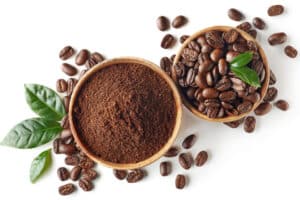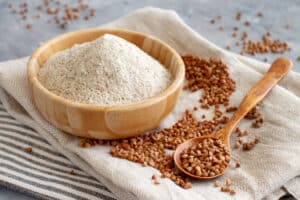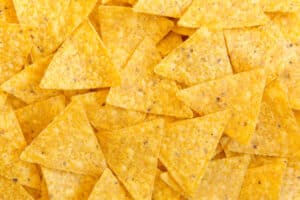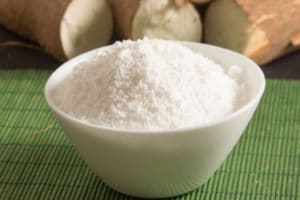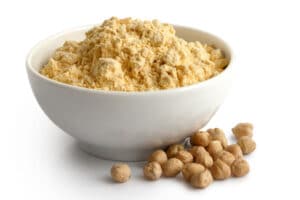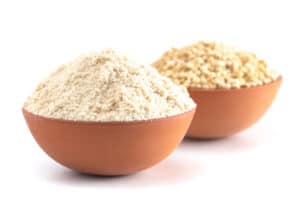If you have a gluten allergy or are following a restricted diet, you may need to use flour substitutes when frying.
However, with an overwhelming number of alternatives on the market, it is easy to get confused.
The regular wheat flour we use for frying can be replaced with cornstarch, rice flour, quinoa flour, and then some!
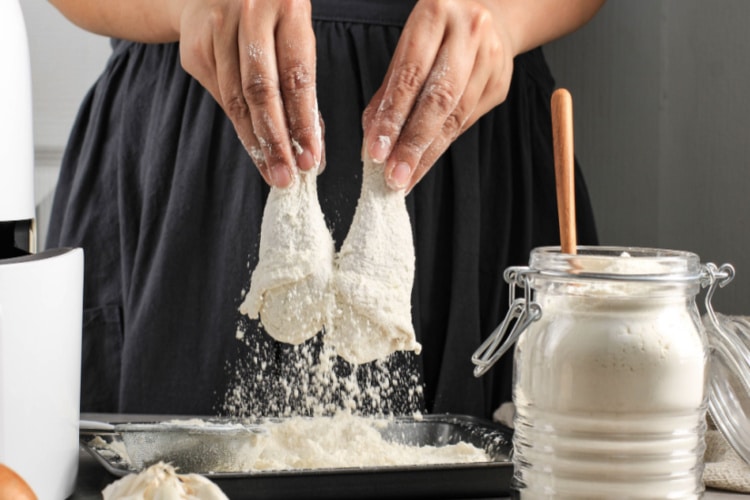
I’ll share more on the best flour substitutes for frying below.
What Can I Use Instead Of Flour For Frying?
There are plenty of choices, whether you are running low on wheat flour or looking for gluten-free options.
These 10 flour alternatives are all excellent for frying:
- Cornstarch
- Rice flour
- Quinoa flour
- Almond flour
- Egg wash and breadcrumbs
- Chickpea flour
- Coconut flour
- Tapioca flour
- Baking powder (not to be confused with baking soda)
- Potato starch
1. Cornstarch
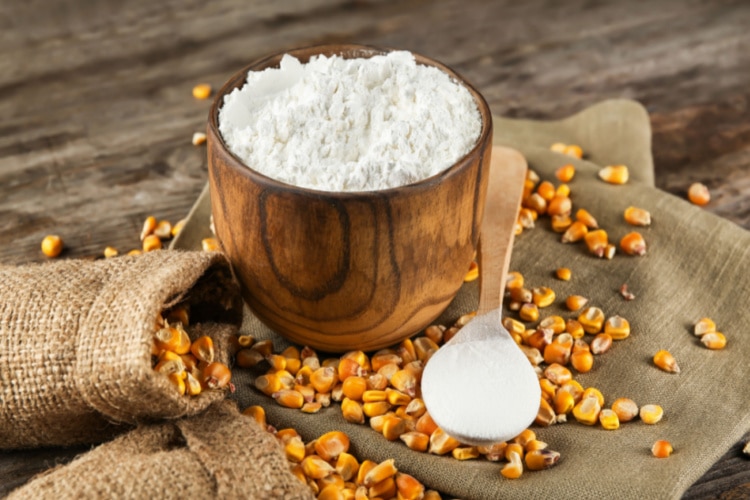
Cornstarch gives your fried goods a pleasant corn flavor and is widely used in East Asia as a frying medium.
Some recipes swear by adding a little bit of cornstarch to regular flour when frying, saying that it makes the coating crunchier.
As a flour substitute, cornstarch makes for a very tangy and crispy coating. It pairs particularly well with meat.
You can swap a cup of regular flour with half a cup of cornstarch for frying. Dilute cornstarch with some water to form a batter, and soak your meat or vegetables in this mixture.
2. Rice Flour
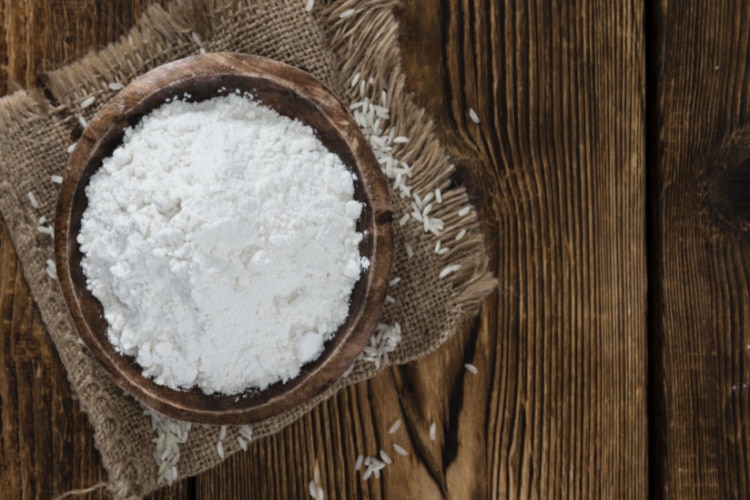
Rice flour sounds bland, but it enhances whichever flavor it’s paired with.
There are several kinds of rice flour, like brown rice, white rice flour, and even glutinous rice flour, which you can find in your local Asian market.
All of them can be used as flour substitutes on their own or mixed together.
Since rice flour has a finer grain, I recommend swapping a cup of regular flour with two cups of rice flour (a ratio of 1:2) for the best result when frying.
When compared to other flours, rice flour absorbs less oil in the frying process, which makes it a great alternative to wheat flour if your priority is to cut back on oil or reduce your caloric intake.
If you’re interested in learning more about these flours, check out our articles on rice flour and brown rice flour substitutes.
3. Quinoa Flour
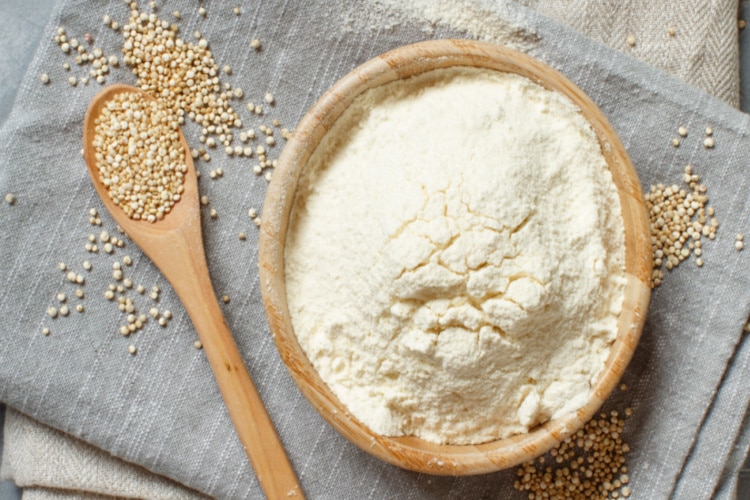
Quinoa is popular with health enthusiasts, but did you know that the grain is actually one of the oldest grains known in South America?
As flour, it’s rich in fiber and protein and effortless to make at home if you have some quinoa.
Roast your quinoa in a skillet on low heat and blend in a high-speed blender. Et voila!
You can watch this video for a step-by-step guide on how to make your own quinoa flour at home!
When used in frying, quinoa flour gives food a very earthy taste. Although you can use it to fry pretty much anything, it pairs particularly well with chicken!
Use quinoa flour in a 1:1 ratio to regular flour when frying. Add lemon zest to your flour and lemon juice to your batter, and enjoy your healthy and gluten-free fried chicken.
4. Almond Flour
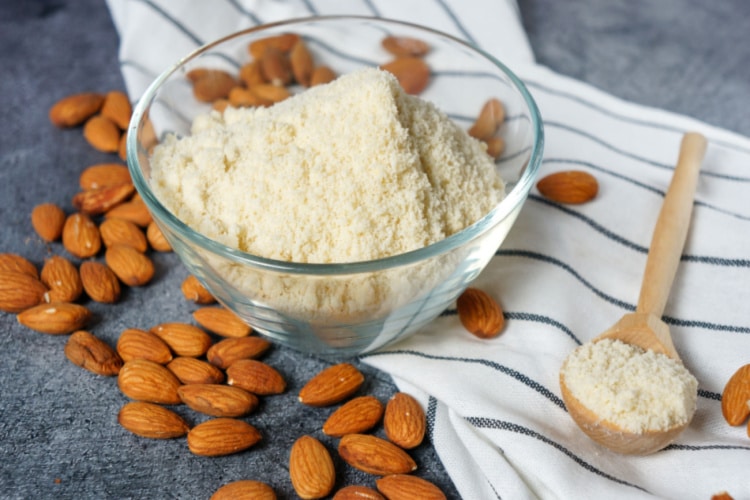
Not to be confused with ground almonds, almond flour is made from blanched almonds.
If you make your own almond milk, you are probably familiar with the “pulp” that is leftover after you strain drenched almonds.
You can spread your pulp on a sheet and pop it into the oven over low heat to make your own flour!
I would recommend using a 1:1 ratio of almond to regular wheat flour when you want to use almond flour as a substitute while frying.
5. Egg Wash And Breadcrumbs
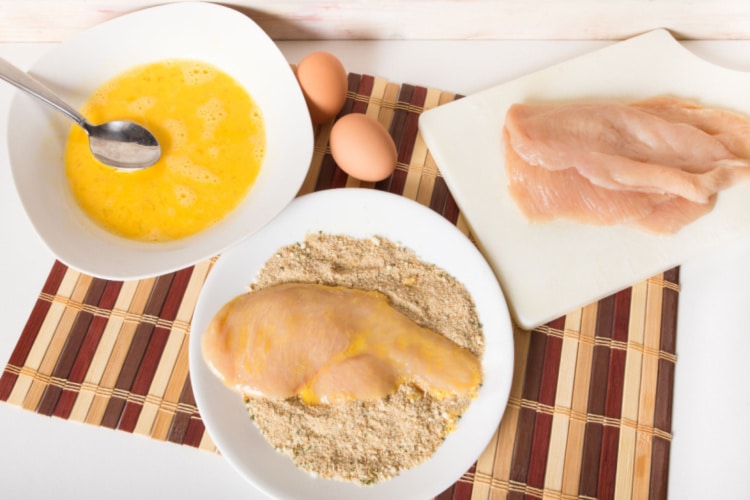
Most cookbooks suggest using flour, eggs, and breadcrumbs to fry food. But what if you skip the flour?
As sacrilegious as it sounds, you can skip the flour and directly coat your meat or vegetable with egg wash. You can whisk it up in minutes.
Coating this concoction with breadcrumbs and then frying is one way you can replace flour.
6. Chickpea Flour
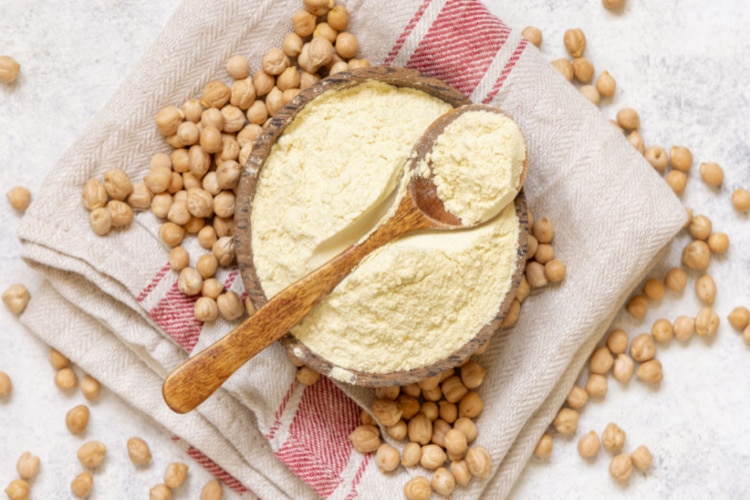
Chickpea flour is fiber-rich, packed with protein, and super tasty.
Just like almond flour, you can easily make chickpea flour at home and customize it to your own taste.
I use chickpea flour in a 1:1 ratio for flour in frying. Here’s a video that shows how to make your own chickpea flour at home.
If you are curious about chickpea flour substitutes and would like to know more about chickpea flour, check out our article on the topic!
7. Coconut Flour
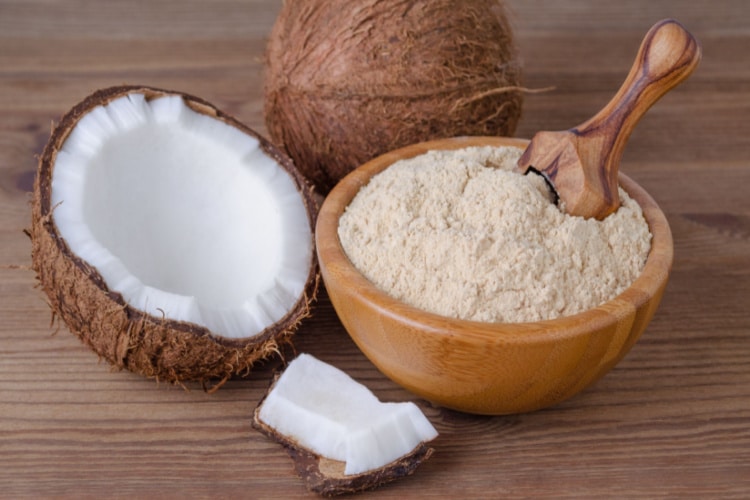
Coconut oil is a keto dieter’s best friend due to its high MCT oil content, which makes it great for ketosis, as MCT oils are small-molecule oils that your body easily turns into energy.
This flour pairs well with both sweet and savory foods and blends in a batter like a dream.
You can swap 1 cup of regular flour for ⅓ cups of coconut flour when frying.
The sweet aftertaste of coconut can also enrich the flavor profile of your dish.
I appreciate this isn’t a flour substitute that would work for everyone, but if you like coconut, give it a try.
Check out this video for a delicious coconut oil fried chicken recipe!
8. Tapioca Flour
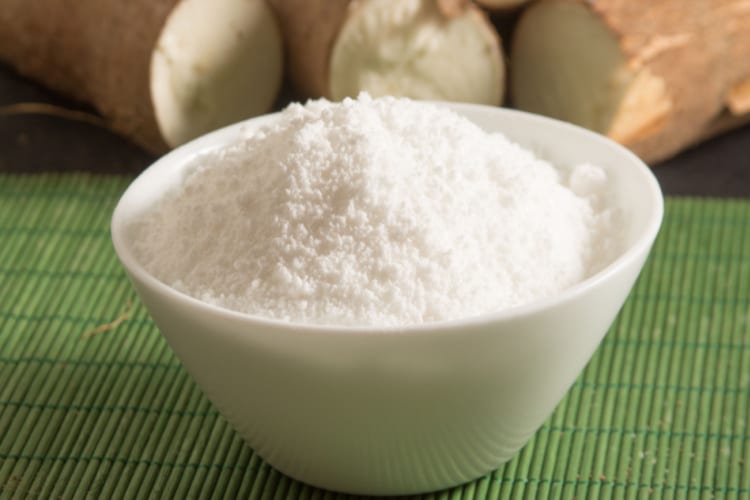
Tapioca is extracted from the cassava root, so tapioca flour is a plant-based flour.
It has a similar texture to cornstarch and can replace it in recipes as well (just make sure you add twice as much tapioca flour instead of cornstarch).
You can substitute flour in frying with tapioca flour in a 1:1 ratio, and you can add a pinch of cornstarch to make your fried goods even crispier!
It pairs particularly well with fish. Next time you are frying shrimp, make sure to opt for tapioca flour; you will not be disappointed!
9. Baking Powder
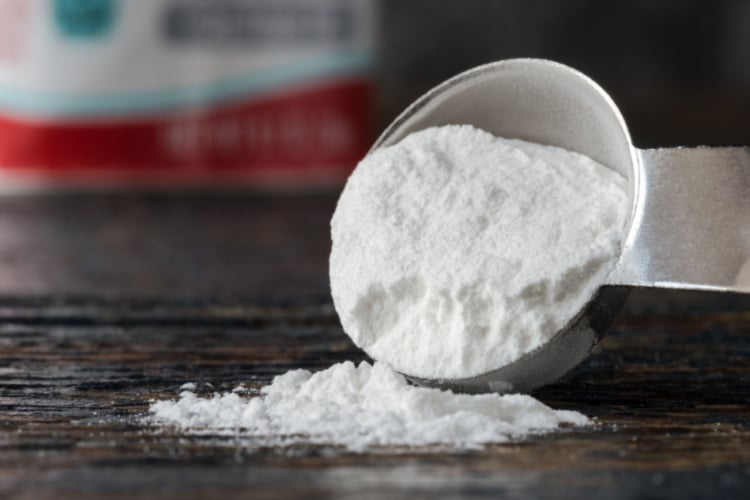
Baking powder is a combination of powders that help the cake batter rise. Even though it contains a small amount of baking soda, baking powder should not be confused with baking soda.
Baking powder is a mixture that contains baking soda, cornstarch, and cream of tartar, a mix that has the power to add a lot of extra crunch to your fried food.
If you’re frying chicken, in particular, baking powder helps dry out the skin in the frying process and get it super-crispy. makes
For the best results, swap 1 cup of regular flour with half a cup of baking powder when frying!
10. Potato Starch
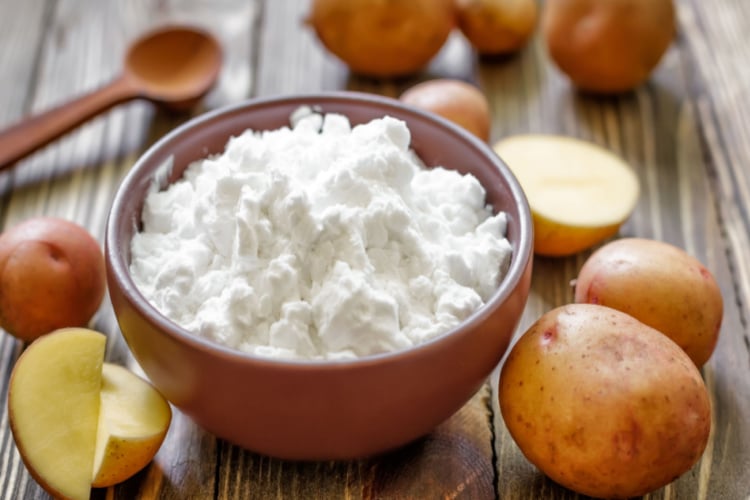
Not to be confused with potato flour, potato starch is another gluten-free alternative for frying your food.
It doesn’t add any flavor; however, due to its density as a starch, it makes for a very thick batter.
Like cornstarch, using potato starch in frying will give you a denser batter, which usually means you’ll have an easier time frying.
Plus, the fried batter coating will be delicious.
You can swap ¾ cup of potato starch with a cup of flour in your recipe.
Conclusion
My favorite flour substitute for frying is cornstarch or eggwash and breadcrumbs, but you can also use rice flour, potato starch, coconut flour, and much more – it all depends on your preferences and dietary requirements.
FAQs
You don’t actually need flour for frying. When deep-frying, flour and flour substitutes form a crust that absorbs moisture and fat, giving the food that crunchy, oily (and delicious) texture.
Wheat flour contains high amounts of gluten that gives fried food chewy elasticity, but you can use flour substitutes for similar results.
There are many reasons why people may not want to use regular wheat flour. If you are intolerant or highly allergic to gluten, you have to avoid foods with wheat (or barley or rye) flour. All the flour alternatives we talk about in this article are gluten-free!
If you are on a strict keto diet, you need to avoid high-carb foods, which means wheat flour is a big no-no. In this case, you might be better off with protein and fiber-rich chickpea flour or almond flour, which will allow you to stay in ketosis. That is why it’s best to know options that work!
Yes. You can use the egg wash and breadcrumb method. You can even try oven-frying and air-frying, which are both flourless, for a less caloric option.
It’s entirely up to you. The air-fryer can work with or without flour. If you use a flour substitute, ensure the batter you’ve prepared isn’t very heavy and wet, as it might damage your fryer.
Not necessarily. Using a mixture of cornstarch and baking powder will give you great results. Even though regular flour does contribute to the taste and texture of the dish, it’s not a prerequisite by any means.
The best flour alternative will depend on the recipe you need it for and your priorities. If your priority is crunch and added flavor, coating your food with cornstarch and rice flour for frying will give you the best results.
For added protein and fiber, opt for chickpea or quinoa flour. If you are following a keto diet, you may want to use coconut flour for the added MCT.

